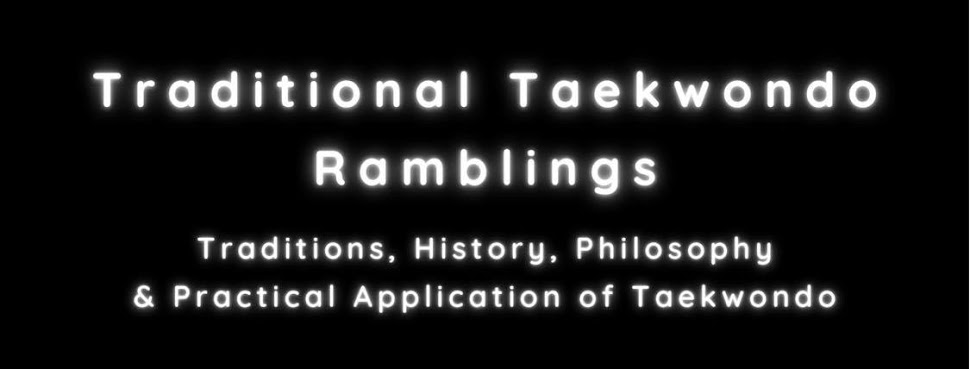 |
| Image source: Taekwondo; Secrets of Korean Karate |
Warning/Disclaimer: I know some Korean, but I am not affluent in it and I am certainly not a Korean myself. So if you are reading this as a person affluent in the Korean language and you for some reason disagree with my please do not hessitate to drop a comment below.
Henka is a Japanese term that is used in JMA about applications that have been altered. A "what if this goes wrong" application. It is still based on the application you got from doing your forms analasys earlier but it might not look much like the techniques in the form. I really liked the authors own explanation on this term:
"Henka: Variation on an application. After doing bunkai to find an oyo, we may then ponder what adaptations could and would be necessary depending on changes in responses or circumstances and how could these variations be achieved". - Ciarân McDonaldThe "Kanji" or "Hanja" character for "Henka" is 変化. I translated into english to see what it "really" meant and I found "change", "variation" so it does seem to be allright. "Henka" or 変化 in Korean Hangul writing is "byonhwa" or "변화". As this is a term that is far away from the mainstream Taekwondo I think it is up to us to either make ourselves a new one, or simply use the original term "Henka" in Korean pronounciation. Personally I like consistency when I teach, so I would rather use all my terms in Korean as far as possible than mish and mash a lot of different languages together to sound "smart". No for a Korean person just saying "Byonhwa" might sound a little strange, but the same applies for the Japanese non martial artists when they only hear "henka". The terminology is for us who researches and teaches Korean forms based Martial Arts. The terms might not make much sense outside that environment. I checked the "Hangul" 변화 to see if I got the same translation as I originally got from the Kanji/ Hanja "変化" and it was the same "change", and "variation" meanings in both.
Muchimi is a term often found in Okinawan Karate styles and refers to the controlling of limbs withouth holding and grabbing them. It is very similar to the Chinese concept of "sticky hands". The Chinese Character to write "Muchimi" 餅身 actually refers to "rice cake hands/arms/body" wich sounds very strange. I got it translated to Korean and actually got the Korean word for rice cake "Ddock" "떡" (delicious) and body "Mohm" "몸". It is a very poetic name for the concept but I do not really like it and I would suggest we go with "sticky arms" instead. I will see if I can contact any Korean practising Wing Chun to see if they have a Korean name for the concept but in the meantime I propose the usage of "끈적팔" "Kkheunchack pal" wich is a direct translation for sticky arms. Some who will check the Hangul through google translate or other such places might find 팔 or "Pal" to be eight and sure enough google translate does not even translate pal into arm chosing only eight when the whole term is written in, but check only pal and you get "arm" too. The Korean language is filled with homonyms (two words that sound just alike but with multiple meanings. I.e in english "Dear" and "Deer" is two different words but they sound alike. Unlike many western written languages where we differentitate the spelling in hangul they write it the same.)
Below is a video where you can see the "Muchimi" or "Kkeunchack Pal" demonstrated. Insted of hard blocking the attacking limbs away, he keeps contact with the attacking limb and redirects it, making new openings or oppertunities for himself.
Click here to go directly to part 3 (last post of the series) Please leave a comment if this stuff was interesting and let me know what you think:-)

No comments:
Post a Comment